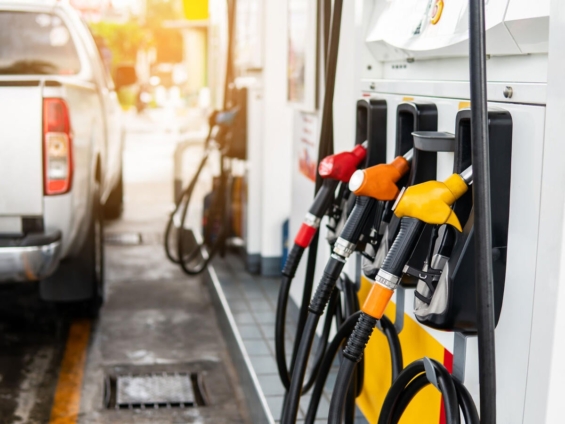The current state of Nigeria’s refineries might become a textbook example of why national oil companies should not combine downstream, midstream and upstream activities at the same time. Sure enough, Middle Eastern or some other NOCs might object that in their respective territories everything works fine yet Nigeria’s example is startling nevertheless. With a combined nameplate capacity of 445kbpd across four refineries, Nigeria ought to do much better than it does currently. NNPC’s new management claims that the historic refining lows are just a reflection of the upcoming downstream revamp program that has started this year, however perhaps it would be truer to blame it on years of mismanagement and rampant corruption that resulted in substantial funds going astray.
For more than 5 years Nigerian refinery utilization rate have been below 30 percent, with a notable decline in the past 2 years when any month above a 5 percent utilization rate might be considered a successful one. The August-September rate stood at a mere 2 percent, bringing Nigeria’s burning oil products imports issue to the forefront again. This stings hard for Nigeria, OPEC’s largest producer of light sweet oil (putting out some 1.8kbpd to the world markets), as even neighboring Niger with a total refining capacity of 20kbpd refines more than Nigeria (as of October 2019 Niger refines roughly 15kbpd), with a downstream capacity twentyfold higher. Let’s take a closer look at Nigeria’s refineries:
Old Port Harcourt Refinery (commissioned in 1965, 60kbpd)
New Port Harcourt Refinery (1989, 150kbpd)
Warri Refinery (1978, 125kbpd)
Kaduna Refinery (1980, 110kbpd)
There are several problems with Nigeria’s refining, let’s analyze them one by one. First, Nigeria’s first two refineries in Port Harcourt and Warri were set up as privately-operated enterprises in which the government had a majority share but did not get involved in the day-to-day operations of it. After the 1978 nationalization of Nigeria’s downstream, which resulted in all marketing companies largely run Western major becoming dependent on the federal government, the refining efficiency and profitability of the business started to deteriorate. The indisputable drop in refining efficiency became blatantly manifest by the early 1990s when the military government tightened its grip over the oil sector, using the NNPC’s well-remunerated positions as tokens of appreciation for political allies.
The politicization of high-ranking downstream positions need not be a problem necessarily should the nominated people be adept and willing to commit to the refineries’ appropriate functioning; however, Nigeria’s story was very different. Money allocated to Nigerian refineries was routinely funneled away resulting in the catastrophically underfinanced condition of the industry, to an extent that the last turnaround maintenance at a Nigerian downstream asset was held in 2008 and the two Port Harcourt refineries did not see any since 2000. Even if turnaround sessions were to materialize, it would be by no means guaranteed that the upgraded units would bring about much-sought change as new infrastructure elements (especially pipelines) are habitually subject to vandalizing attacks.
The headache goes even further. The Nigerian government regulates the gasoline price on its domestic market (145 naira per litre, equivalent to some $0.5 per litre), running counter to the general African trend of oil-producing peers like Angola or Ghana using the price drop of 2015-2016 to curtail fuel subsidies. Thus, with little to no refining taking place in Nigeria the country is compelled to import fuels which are then sold domestically below market levels. Since no oil and gas major in its sane mind would commit to such a setup, it all ends up with NNPC taking the brunt of financial losses, using DSDP (direct sale-direct purchase) programmes to swap Nigerian oil for oil products. Needless to say that the whole scheme in its current form only perpetuates NNPC’s ill financial health.
Where does Nigeria go from here, one might ask. Future seems much brighter than the present for Nigeria – the commissioning of the 650kbpd Dangote Refinery in Lagos in 2020-2021 might single-handedly solve Nigeria’s products dearth. The Dangote Refinery is a fully private enterprise with no (obvious) commitments to the Nigerian state, freeing them both in terms of efficiency, i.e. no need for a bloated workforce pool, and in terms of marketing, i.e. Dangote need not market the refined fuels as they can avail themselves with merely selling it to retailers who then take on most of the market risks like the fix fuel price. Dangote might nevertheless want to involve NNPC in some way since his conglomerate does not have any upstream assets, thus all the refinery feedstock would need to be sourced from elsewhere.
The Dangote Refinery would have substantially more leeway in exporting oil products, too, buttressed by a system of five single point mooring buoys next to the refinery. Ineluctably this makes the task of balancing NNPC activities even more difficult, the Nigerian NOC would have four refineries with most of domestic demand potentially covered by Dangote Refinery. On the other hand, with no manifest necessity to continue DSDP schemes in the post-2023 horizon, NNPC’s crude side will definitely benefit from Dangote’s coming onstream as some 0.3mbpd of Nigerian crude are swapped for oil products currently. Privatization might be the only viable way out of this quagmire. The Buhari government has previously voiced its concerns on NNPC refineries being bought up by domestic businessmen for speculative uses, yet still, it seems the risks inherent in privatization are smaller than those of perpetuating the current travails.
Source: Oilprice.com
Photo: wikipedia





